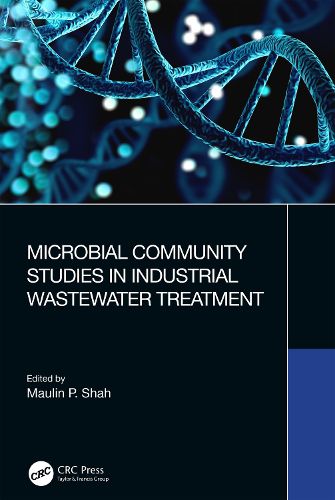Readings Newsletter
Become a Readings Member to make your shopping experience even easier.
Sign in or sign up for free!
You’re not far away from qualifying for FREE standard shipping within Australia
You’ve qualified for FREE standard shipping within Australia
The cart is loading…






Focusing on microbial community structure in the field of wastewater treatment, this book highlights structural analyses in relation to changes in physico-chemical parameters. It further covers physiological analyses of microbial communities, enrichment of pure cultures of key species in relation to changes in physico-chemical parameters, and analyses and modelling of consequences of changes in microbial community structure. Based on 16S rRNA gene sequencing, groups of bacteria that perform nitrogen fixation, nitrification, ammonification and other biochemical processes are covered for an entire wastewater treatment plant bioreactor along with temporal dynamics of bacterial communities.
Features:
Describes the state-of-the-art techniques and the application of omics tools in wastewater treatment reactors (WWTRs).
Includes both the theoretical and practical knowledge on the fundamental roles of microorganisms in WWTRs.
Discusses environmental microbial community proteomics.
Covers relating function and community structure of complex microbial systems using neural networks.
Reviews the economics of wastewater treatment and the development of suitable alternatives in terms of performance and cost-effectiveness.
This book is aimed at graduates and researchers in biological engineering, biochemical engineering, chemistry, environmental engineering, environmental microbiology, systems ecology and environmental biotechnology.
$9.00 standard shipping within Australia
FREE standard shipping within Australia for orders over $100.00
Express & International shipping calculated at checkout
Focusing on microbial community structure in the field of wastewater treatment, this book highlights structural analyses in relation to changes in physico-chemical parameters. It further covers physiological analyses of microbial communities, enrichment of pure cultures of key species in relation to changes in physico-chemical parameters, and analyses and modelling of consequences of changes in microbial community structure. Based on 16S rRNA gene sequencing, groups of bacteria that perform nitrogen fixation, nitrification, ammonification and other biochemical processes are covered for an entire wastewater treatment plant bioreactor along with temporal dynamics of bacterial communities.
Features:
Describes the state-of-the-art techniques and the application of omics tools in wastewater treatment reactors (WWTRs).
Includes both the theoretical and practical knowledge on the fundamental roles of microorganisms in WWTRs.
Discusses environmental microbial community proteomics.
Covers relating function and community structure of complex microbial systems using neural networks.
Reviews the economics of wastewater treatment and the development of suitable alternatives in terms of performance and cost-effectiveness.
This book is aimed at graduates and researchers in biological engineering, biochemical engineering, chemistry, environmental engineering, environmental microbiology, systems ecology and environmental biotechnology.